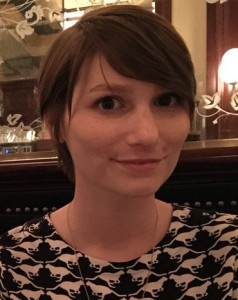I never thought I would hear anyone say that they were in desperate need of historians. But two weeks ago, during the internship session sponsored by the AHA Career Diversity for Historians program at the University of New Mexico, I heard Leba Freed, director and founder of the new Wheels Museum in Albuquerque, say to a room full of graduate students that she was “desperate” for help. She needed history graduate students to organize the extensive holdings, historicize transportation in New Mexico, and design the Wheels Museum from the ground up. Freed was just one of many possible employers that came to UNM through the Career Diversity program and pitched to the history graduate community why we should work for her.
Now, to be honest, I was skeptical about the Career Diversity program when the AHA first introduced it to UNM. I had a few misgivings about it, but it was the idea of internships for graduate students that really stumped me. Why does the AHA want me, a history graduate student working on a dissertation and with full department funding, to spend time at another job? And at an internship no less: those part-time, unpaid positions shoved at undergraduate and high school students to help them figure out what path they wanted to follow after graduation. I’ve already chosen a path: I want to be a historian.
The idea of internships also put off a lot of my graduate student colleagues. The graduate community at the University of New Mexico has a particular kind of hustle, one reminiscent of the perpetual underdog. Look at all the schools in the Career Diversity initiative: UCLA, University of Chicago, Columbia, and the University of New Mexico. UNM is the least prestigious of the group, and the graduate community knows this. So we, history graduate students, hustle, at a blistering pace, to finish work in our courses and department positions, and at second and third jobs outside of the history department. Why should we spend our time at internships when our plates are already so full?
The internship session a few weeks ago assuaged a lot of my misgivings and clarified what a graduate student internship would really look like. And it looked a lot different from what I had originally imagined. The prospective employers, about nine organizations altogether, each spoke to the graduate student group for five minutes about why we should choose them. Places like the National Hispanic Cultural Center, the Hubble House, and the Pueblo Cultural Center, all located in Albuquerque, wanted graduate students to help them curate and create collections, write educational materials, and do research for upcoming community programs. The National Park Service (specifically the National Trails Program), the Albuquerque City Planning Office, the Wheels Museum, and the Acequia Madre House needed help with historical preservation and archiving collections. Even a private sector employer, Heritage Hotels, wanted a graduate student to act as a consultant providing historical research for the company, which prides itself on the preservation of New Mexican culture. Each of these internships could help an interested graduate student flex a historical muscle that might otherwise be underused in academic coursework.
Additionally all of the employers at the session seemed willing and able to work with the crazy, sometimes erratic, graduate student schedules and interests. Not only could we choose an employer, but we could pick the direction of the project, the subject, the duration, and the number of hours we could work per week. Oh wait, did I mention that we would get paid? Through the combination of an hourly wage paid by the employer and funds from the AHA-Mellon initiative, each one of these opportunities would be paid (pay being pretty much necessary to get an overworked graduate student to do anything). Directly after the employer pitches, graduate students networked with the different organizations, many making connections and exchanging businesses cards, promising to call or e-mail about working over the summer and into the fall.
Many of these internships probably won’t lead to full-time work after the initial internship finishes. The majority of the organizations that came to the session don’t have enough funds to hire the historians they need without the help of the AHA Career Diversity project. Regardless, I finally understand why the AHA Career Diversity program sees graduate student internships as worthwhile. Graduate students can get a chance to interact with the greater historical community in their areas, they can work on skills critical to the nonacademic historian—writing for a community audience, archiving, historical consulting, research as a job rather than an individual interest—and they can build a CV that is attractive to both academic and nonacademic employers.
And, if anyone is interested, I’m currently waiting to hear back from one of the organizations that came to the internship session to discuss a possible summer position.
Margaret DePond is a PhD candidate in history at the University of New Mexico. Her dissertation research focuses on gender and the beach in Los Angeles during the early 20th century. She is also an assistant editor at the New Mexico Historical Review.
This post first appeared on AHA Today.
Tags: AHA Today Career Diversity for Historians Resources for Graduate Students Graduate Education
Comment
Please read our commenting and letters policy before submitting.







